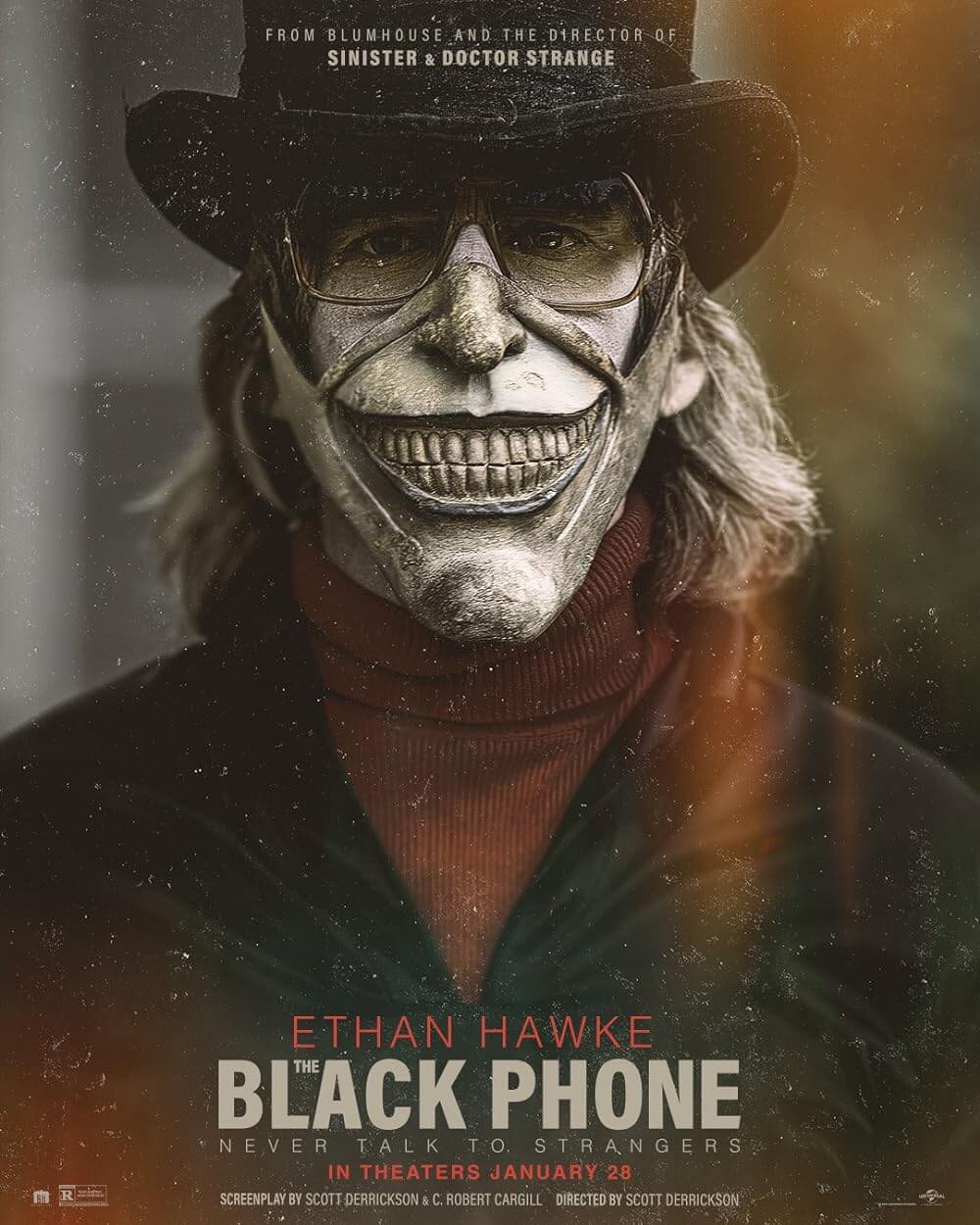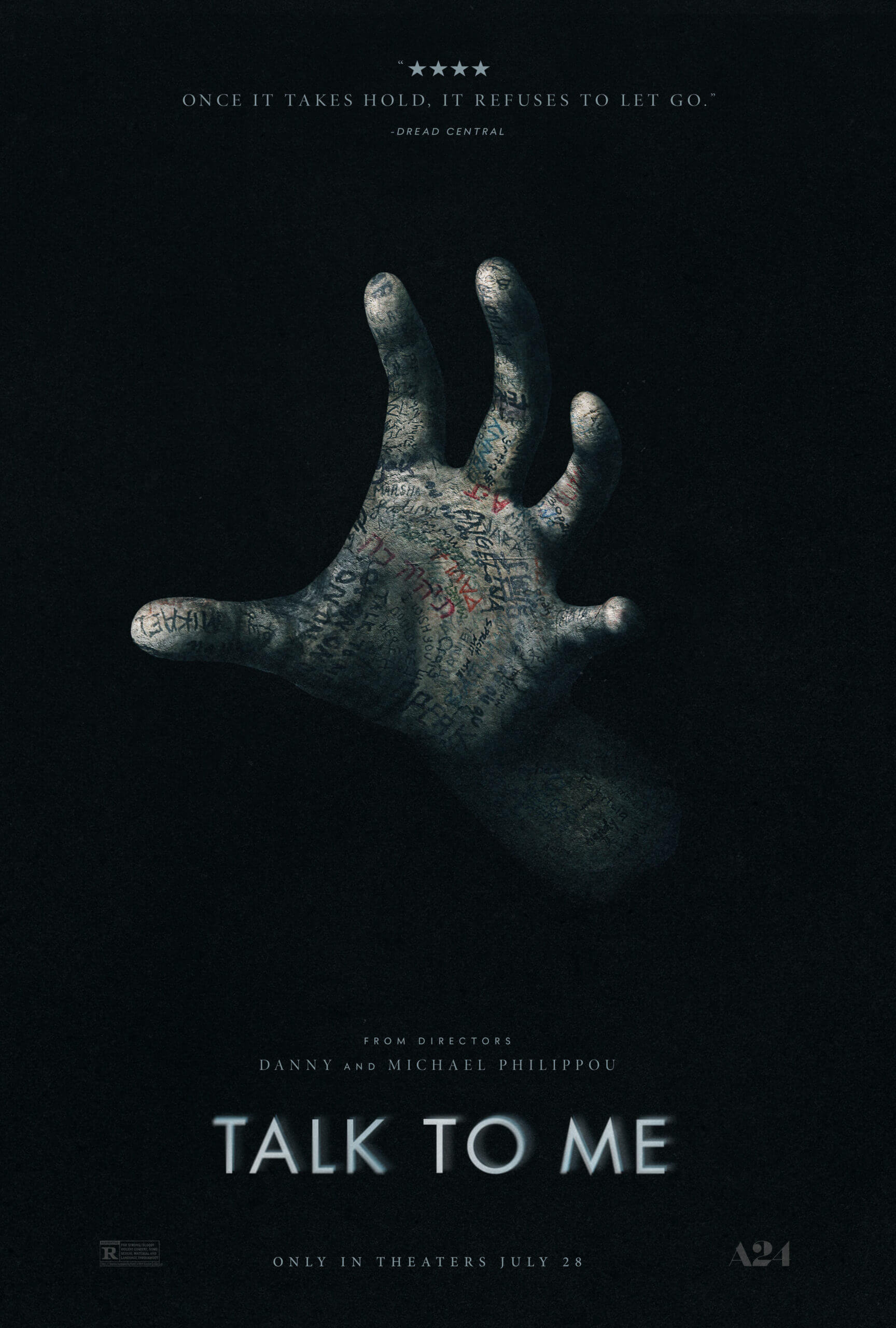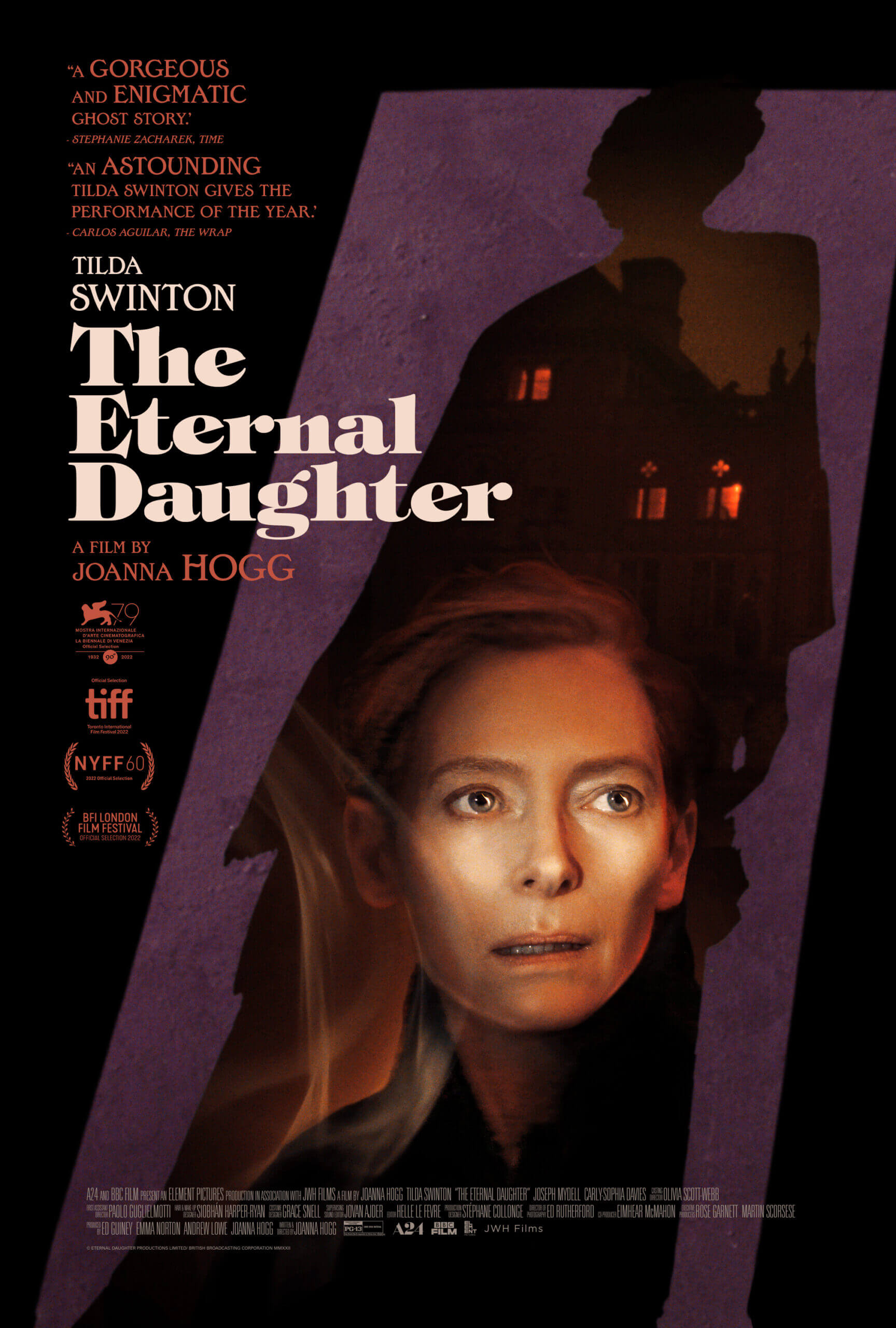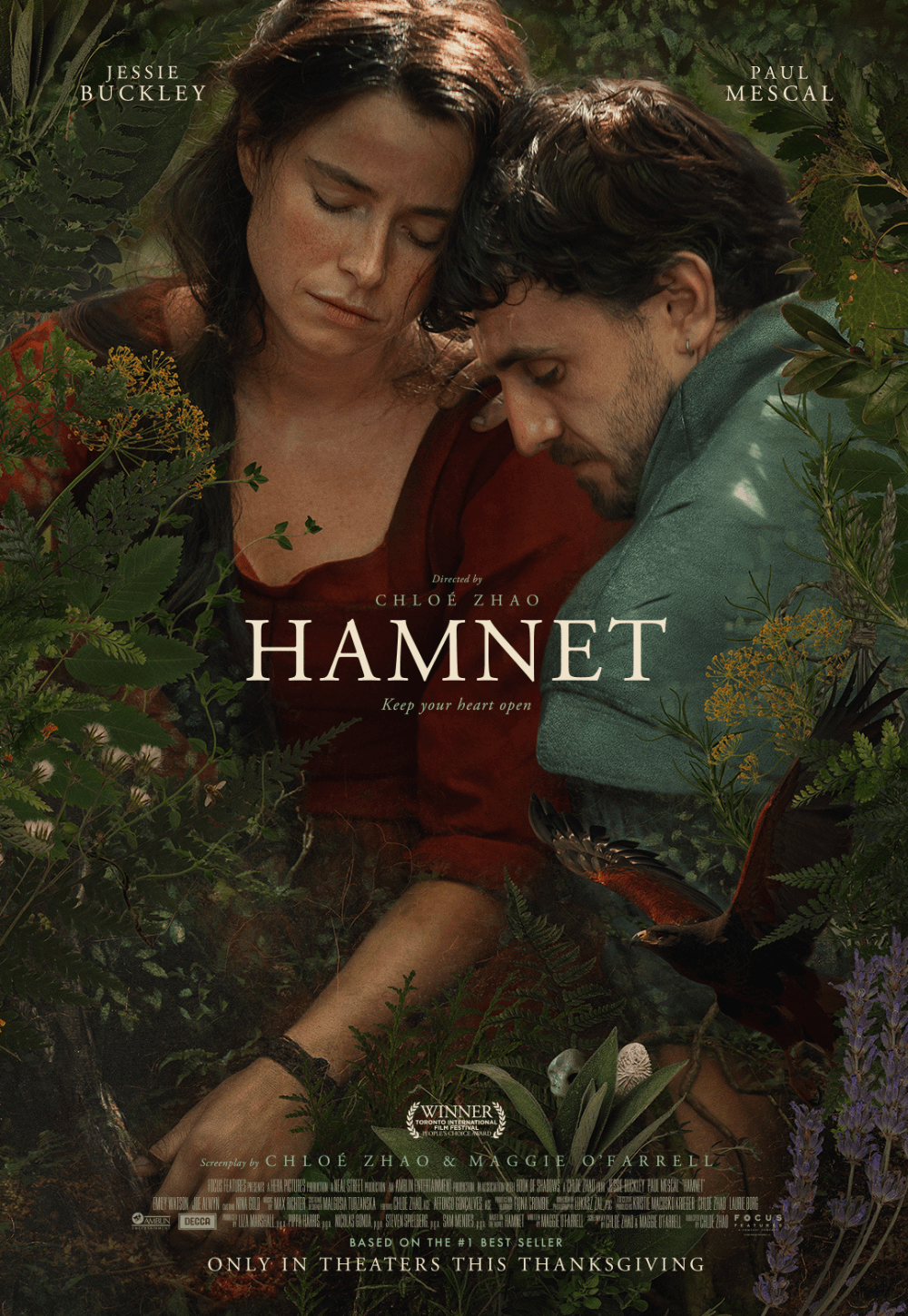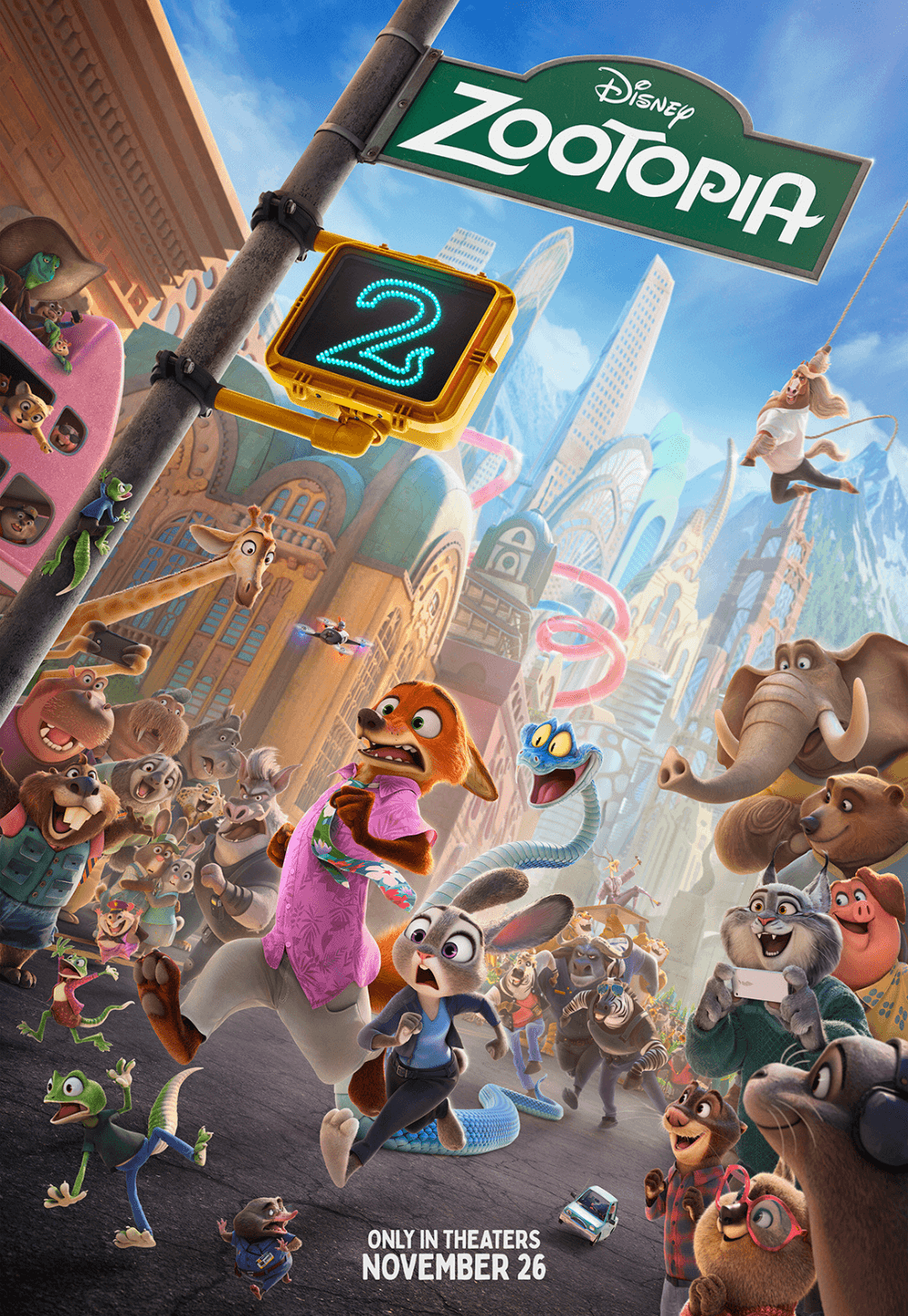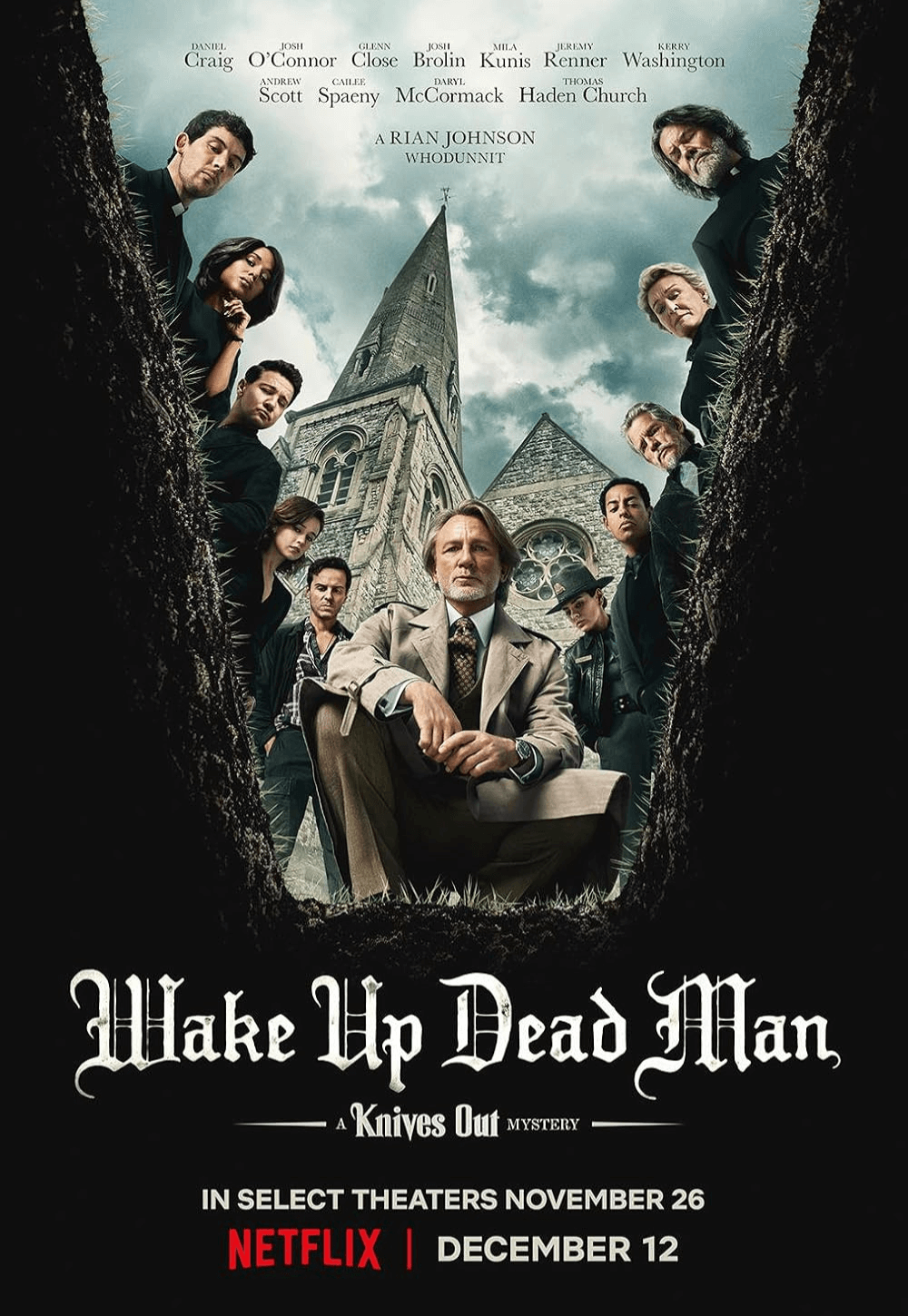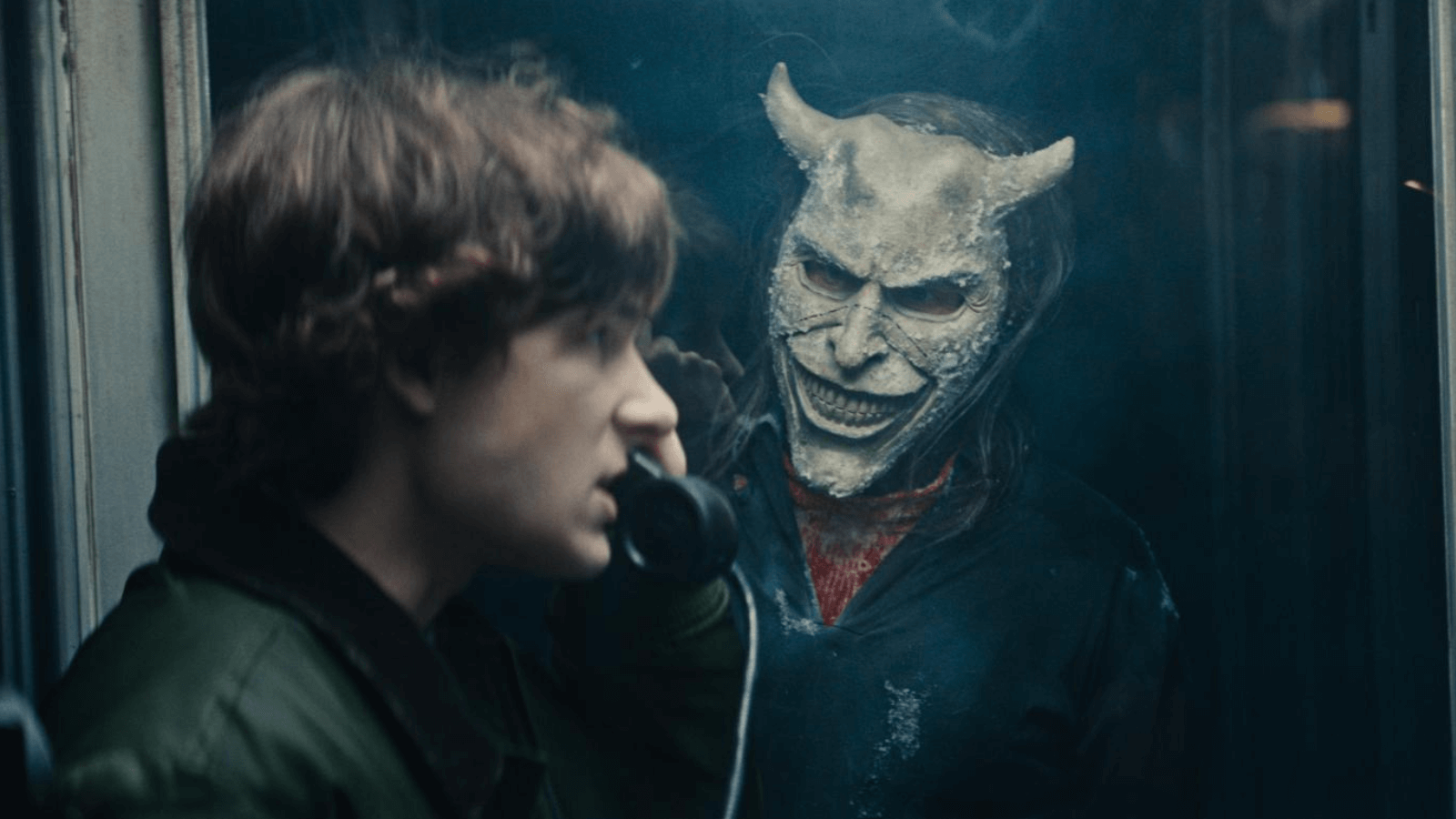
Black Phone 2
By Brian Eggert |
The Grabber’s mask in 2022’s The Black Phone is a hodgepodge of repurposed icons: devil horns and the twisted smile from The Man Who Laughs (1928), elongated to unnatural yet absolutely frightening lengths. The same might be said of Black Phone 2, a medley of horror influences and homages puréed into a spooky and surprisingly poignant confection. On the surface, it’s evident that director Scott Derrickson and his co-writer C. Robert Cargill have drawn from the pantheon of horror movies. The sequel’s overhaul of The Grabber as a malignant force, haunting children’s dreams from beyond the grave, comes directly from the Nightmare on Elm Street franchise. The setting at a winter camp for kids, where campers become victims, inverts the summer camp from the Friday the 13th series. The isolated blizzard setting, exacerbated by an axe-wielding maniac, evokes The Shining (1980). But regardless of its unmistakable antecedents, Black Phone 2 delivers plenty of thrills with a thoughtful script and some of Derrickson’s best work behind the camera.
Derrickson and Cargill leave Joe Hill’s original short story far behind for their sequel, moving closer to the sensibilities of Mike Flanagan, complete with long passages of dialogue-driven scenes that unpack the characters’ traumas sustained in the first movie. I’m not the only critic to have noted how many features today are about trauma, particularly in the horror genre. Perhaps we’re all seeking a way to heal in the aftermath of the pandemic and the sociopolitical turmoil of the last decade, which has consumed the minds of horror writers. Regardless, trauma isn’t merely a voguish theme in Black Phone 2; it’s a connective tissue to the events in the first movie. Mason Thames returns as Finn, the boy who was kidnapped by The Grabber (Ethan Hawke) but ultimately killed him with the help of some ghosts and his sister, Gwen (Madeleine McGraw), a medium whose dreams show her the past and future. And when the sequel picks up, Finn is still processing what happened.
An affecting subplot finds Finn following a path similar to his father, Terrence (Jeremy Davies), who turned to alcohol when his wife hanged herself. After his experience with The Grabber, Finn self-medicates with pot, trying not to think about the kidnapper and the ghostly out-of-order phones that keep ringing around him. This shifts the focus onto Gwen. Her recent spate of sleepwalking dreams leads her to Alpine Lake, an isolated Christian camp in the Rockies where their mother stayed in 1957, a year before it closed down after the deaths of three children—the three ghosts who have been reaching out to Gwen. Joined by Finn and her would-be boyfriend, Ernesto (Miguel Mora), Gwen heads to the campground under the guise of counselors-in-training to discover who killed the three kids, only to find that a blizzard has prevented anyone but the camp’s staff from arriving.
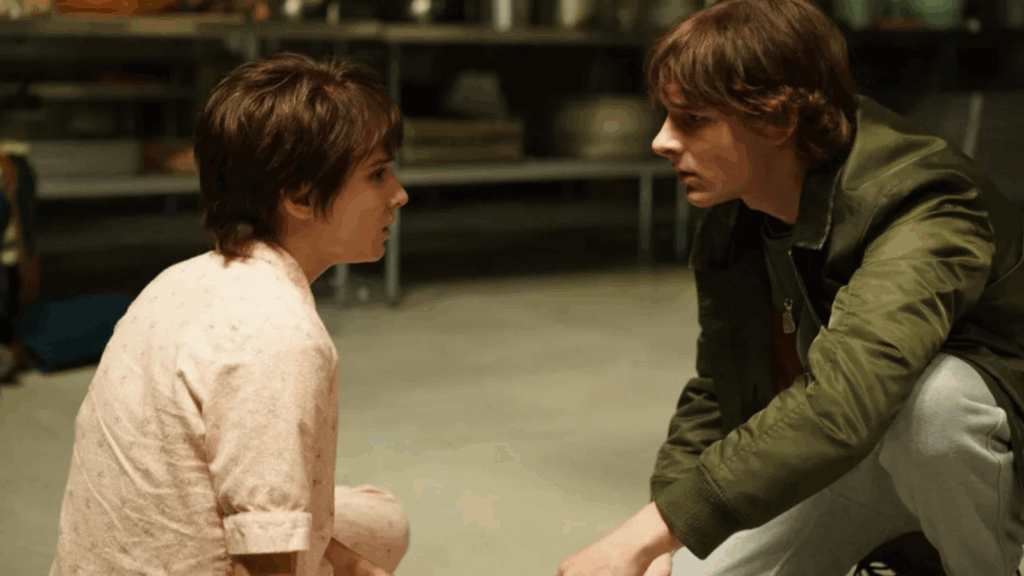
Trapped by the snow, they must uncover the victims’ bodies to stop The Grabber, although why one affects the other is inadequately explained away by some expositional dialogue about the dead kids’ fear fueling his supernatural evil. Meanwhile, the living kids report to the camp’s owner, Mando (Demián Bichir), who serves as a vague red herring before becoming a noble hero. Also present are Mando’s niece, the strong-willed Mustang (Arianna Rivas), and the two self-righteous Christian attendants, Kenneth (Graham Abbey) and the snooty Barbara (Maev Beaty). Given the setting, Black Phone 2‘s initial skepticism about Christian beliefs gives way to an affirmation of heaven and hell—back from the dead, The Grabber quips, “Hell is not flames, Finney. It’s ice.” The movie can feel preachy about religion in that respect, with Gwen quoting the Bible and praying for Jesus to help.
What works best about Black Phone 2 is how well the writers weave the story into the original, deepening the mythology between the family and The Grabber in unexpected, emotional ways. The movie also boasts two genuinely good performances from Thames and McGraw, the former playing a troubled teen with raw feeling, the latter a fearless fighter who essentially becomes a Dream Warrior. Indeed, Gwen figures out, similar to most characters in A Nightmare on Elm Street (1984) and its sequels, that they have power over their tormentor in their dreams. At first, she’s subject to images of The Grabber’s horrifying violence against his victims, and she struggles not to fall asleep because she learns that in her dreams, the killer can hurt her. By the icebound finale, Gwen and the crew face off against the increasingly absurd, ice-skating Grabber, employing her newfound skills as a super-powered somnambulist.
Derrickson and cinematographer Pär M. Ekberg once again present Gwen’s dreams with the look of 1970s home movies shot on Super 8, and when she wakes, the would-be footage burns back into reality like melting celluloid—a visual that makes no logical sense, but it looks neat. More visually compelling is the sequel’s tendency to hold a single shot for a whole conversation, often by shifting the camera’s position for a fluid passage instead of cutting between two setups. The immersive effect highlights the excellent work by the actors, as well as the director’s commitment to these characters’ emotional states in visual terms. Of course, Derrickson doesn’t skimp on the scary stuff, including jarring phones, the ghosts of mutilated children, and The Grabber’s menacing taunts as a lipless ghoul behind his chilling mask (“I am a bottomless pit of sin,” he says, sending a shiver up my spine).
A more cynical critic might gripe about the sequel’s reliance on iconic horror movies or downplay the experience due to its sillier moments, such as when The Grabber transforms into a demented snowman reminiscent of 1997’s Jack Frost. To be sure, I found certain aspects of the finale to be either goofy or distracting. Notice how the filmmakers forget that it’s cold outside: Most characters here seem immune to the elements, as when Terrence plunges into a frozen lake and emerges without hypothermia or even a shiver. Otherwise, Black Phone 2 boasts some of Derrickson’s most cohesive formal choices and emotional storytelling, anchored by McGraw’s strong performance and the material’s willingness to engage with the consequences of what happened before. It’s fittingly scary and a worthy sequel that builds upon the original in ways that avoid simply replicating its formula for a quick cash-grab—and it’s all the more satisfying for supplying something that feels like progress, even if it’s relying on well-established ideas as propellants.
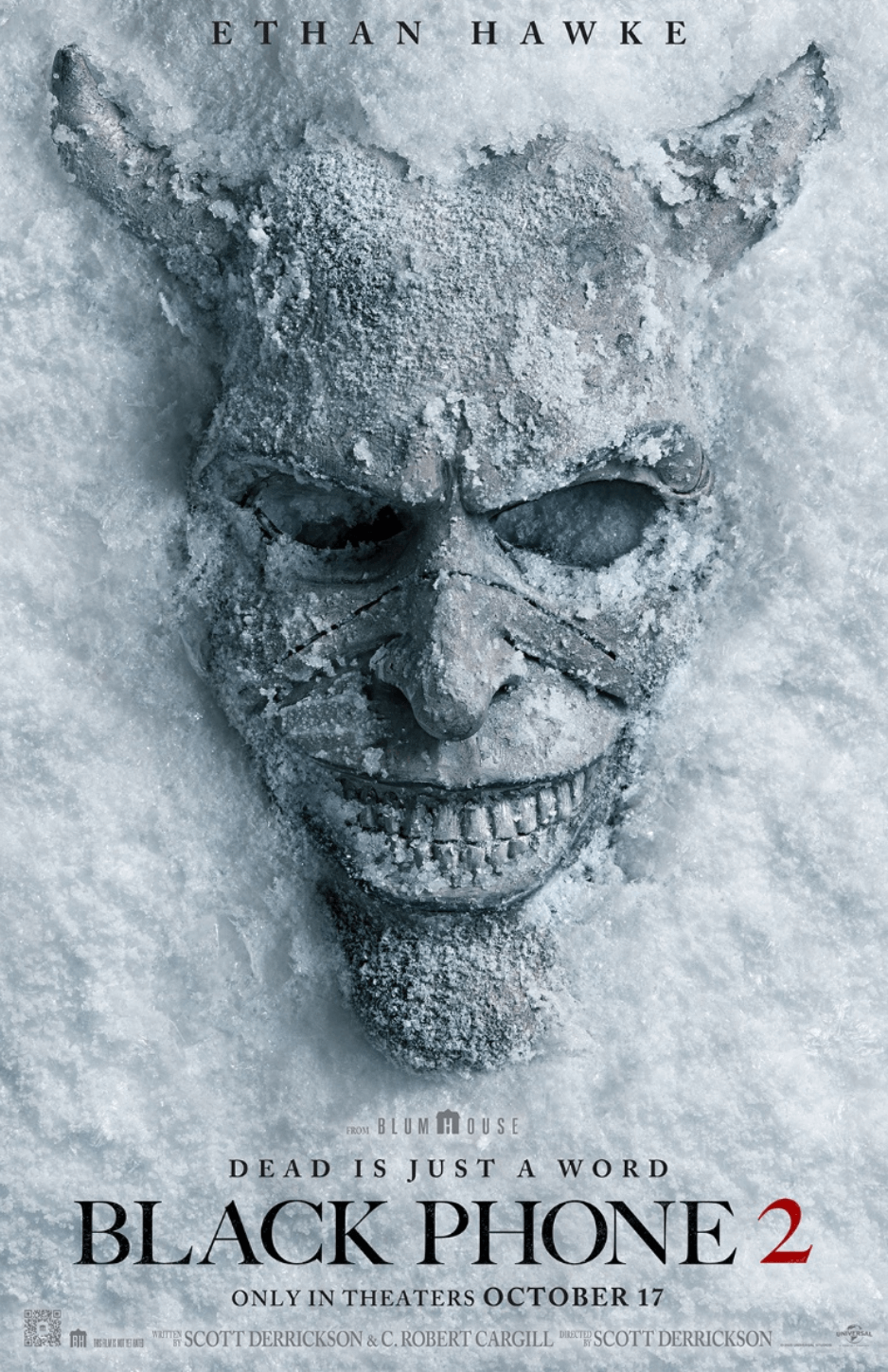
Thank You for Supporting Independent Film Criticism
Thank you for visiting Deep Focus Review. If the work on DFR has added something meaningful to your movie watching—whether it’s context, insight, or an introduction to a new movie—please consider supporting it. Your contribution helps keep this site running independently.
There are many ways to help: a one-time donation, joining DFR’s Patreon for access to exclusive writing, or showing your support in other ways. However you choose to support the site, please know that it’s appreciated.
Thank you for reading, and for making this work possible.
Brian Eggert | Critic, Founder
Deep Focus Review


